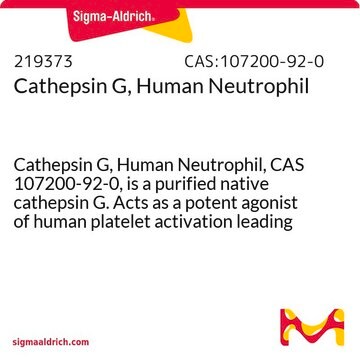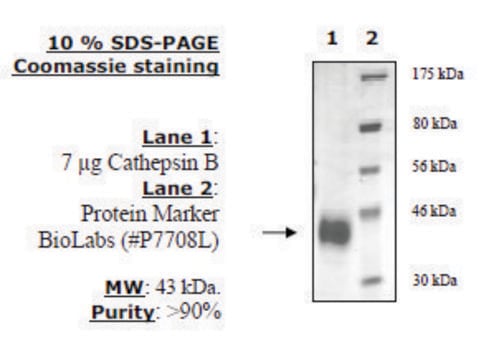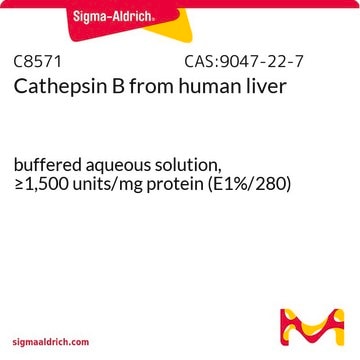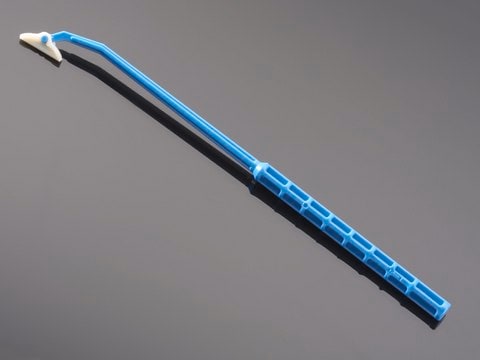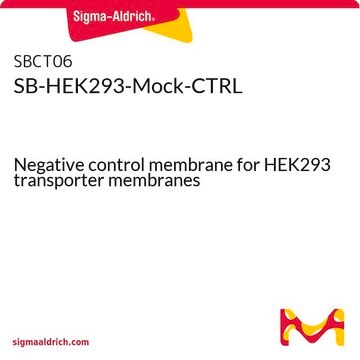SRP0290
Cathepsin F Active human
recombinant, expressed in FreeStyle™ 293-F cells, ≥90% (SDS-PAGE)
Synonym(s):
CATSF, CLN13
Sign Into View Organizational & Contract Pricing
All Photos(1)
About This Item
Recommended Products
recombinant
expressed in FreeStyle™ 293-F cells
Assay
≥90% (SDS-PAGE)
form
aqueous solution
specific activity
≥18 pmol/min-μg
mol wt
53 kDa
technique(s)
activity assay: suitable
solubility
soluble
water: soluble
NCBI accession no.
shipped in
dry ice
storage temp.
−70°C
Gene Information
human ... CTSF(8722)
General description
Research area: CELL SIGNALING
Human cathepsin F (GenBank Accession No. NM_003793), CD33 signal peptide(amino acids 1-16) + cathepsin S (amino acids 20-end), with C-terminal HIS tag, MW = 53 kDa (more than 58 kDa after post-modification), expressed in FreeStyle 293-F cells.
Human cathepsin F (GenBank Accession No. NM_003793), CD33 signal peptide(amino acids 1-16) + cathepsin S (amino acids 20-end), with C-terminal HIS tag, MW = 53 kDa (more than 58 kDa after post-modification), expressed in FreeStyle 293-F cells.
Application
Active human cathepsin F is useful for the study of enzyme kinetics, screening inhibitors, and selectivity profiling. Active human cathepsin F has been used in a study to assess its implications for the development of novel immunomodulators. Active human cathepsin F has also been used in a study to investigate microarray expression analysis and identification of serum biomarkers for Niemann-Pick disease.
Biochem/physiol Actions
Cathepsin F (CtsF) are endopeptidases that play a role in lysosomal protein degradation. Beyond its involvement in protein recycling, CtsF has also been associated with immune responses mediated by Toll-like receptors (TLRs) and antigen processing. Additionally, mutation in the cathepsin F gene is related to the development of familial papillary thyroid cancer , type B Kufs disease, defective lysosomal degradation and abnormal autophagy, and Alzheimer′s disease.
Unit Definition
One unit is defined as the amount of enzyme that will cleave 1 pmol of substrate per min at 37°C
Physical form
Formulated in 45 mM sodium acetate, 135 mM NaCl and 10% glycerol.
Preparation Note
Thaw on ice. Upon first thaw, briefly spin tube containing enzyme to recover full content of the tube. Aliquot enzyme into single use aliquots. Store remaining undiluted enzyme in aliquots at -70°C. Note: Enzyme is very sensitive to freeze/thaw cycles.
Legal Information
FreeStyle is a trademark of Invitrogen Corp.
Storage Class Code
12 - Non Combustible Liquids
WGK
WGK 1
Flash Point(F)
Not applicable
Flash Point(C)
Not applicable
Certificates of Analysis (COA)
Search for Certificates of Analysis (COA) by entering the products Lot/Batch Number. Lot and Batch Numbers can be found on a product’s label following the words ‘Lot’ or ‘Batch’.
Already Own This Product?
Find documentation for the products that you have recently purchased in the Document Library.
Salma Teimoori et al.
Parasitology international, 66(4), 443-447 (2016-05-04)
Diagnosis of Opisthorchis viverrini infection by conventional stool examination is increasingly difficult due to the low intensity of the infection after several rounds of control programmes in endemic regions as well as coinfections with intestinal flukes. Therefore sensitive and specific
Cathepsin F genetic mutation is associated with familial papillary thyroid cancer
Wang Y, et al.
Journal of Separation Science, 364(4), 414-424 (2022)
Cathepsins in the Pathophysiology of Mucopolysaccharidoses: New Perspectives for Therapy
Pasquale VD, et al.
Cells, 9(4), 979-979 (2020)
Celine V M Cluzeau et al.
Human molecular genetics, 21(16), 3632-3646 (2012-05-24)
Niemann-Pick disease type C (NPC) is a lysosomal storage disorder characterized by liver disease and progressive neurodegeneration. Deficiency of either NPC1 or NPC2 leads to the accumulation of cholesterol and glycosphingolipids in late endosomes and early lysosomes. In order to
The Crystal Structure of Human Cathepsin F and Its Implications for the Development of Novel Immunomodulators
Somoza JR, Palmer JT, Ho JD.
Journal of Molecular Biology, 322(3), 559-568 (2012)
Our team of scientists has experience in all areas of research including Life Science, Material Science, Chemical Synthesis, Chromatography, Analytical and many others.
Contact Technical Service